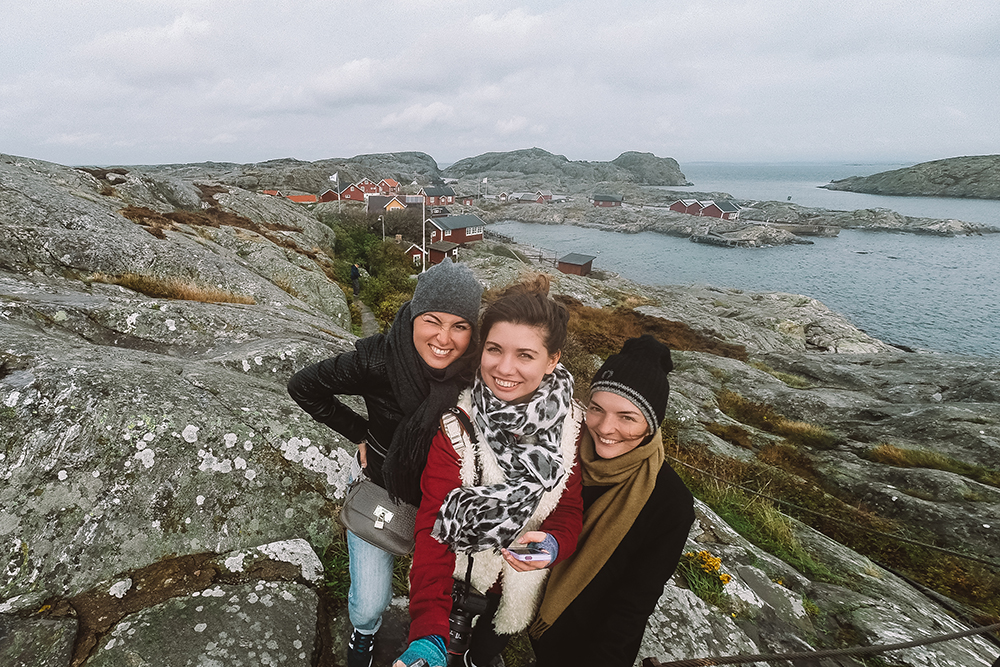
Among wild landscapes, sustainable fishing and good coffee, three girls find the best weekend road trip of their lives.
But first, coffee!
We land in Gothenburg, Sweden’s second largest city. What used to be a grungy main port for many centuries is now the cultural capital of the country, presenting the world with such talents as Ace of Base and Alicia Vikander. Former industrial areas are turned into vibrant neighbourhoods with picturesque architecture, contemporary art galleries, community gardens and, of course, endless coffee shops.
Coffee is truly a religion here. Tucked so close to the north pole they barely get any sun in winter, and Swedes rely on five to six cappuccino injections to get them through the day. But God forbid asking for a takeaway cup—authentic coffee breaks, or fika, are meant to be leisurely and accompanied by an obligatory sweet.
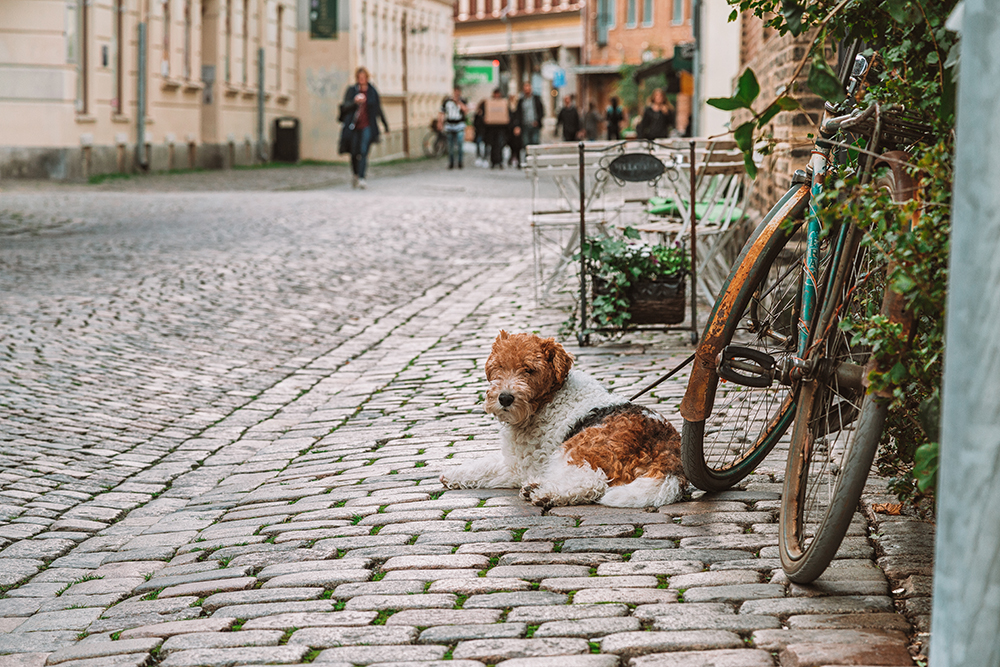
For the after-flight fika we visit charming Haga—one of the oldest regions in Gothenburg (pictured above), guarded by the robust Skansen Kronan fortress. What used to be the city’s first suburb with a shady reputation in the 17th century, is now the coolest low-key hub occupied by artisan cafés and vintage shops. I spot a hagabulle the size of my head in Café Husaren, the place where these coated in sugar spiral-shaped buns were invented—breakfast is sorted.
Gothenburg is compact and easy to navigate, so we manage to ride the legendary wooden roller coaster in Liseberg amusement park; snap a selfie next to the old Danish ship Viking, that was, according to legend, trapped in the city by a cunningly built low bridge; wash down the long day with cocktails by the twice ‘World’s Best Barman’ Dosa Ivanov in the Clarion Hotel Post; and even take a swim in a terrifying pool with a glass bottom attached outside the nineteenth floor of Gothia Towers in one day.
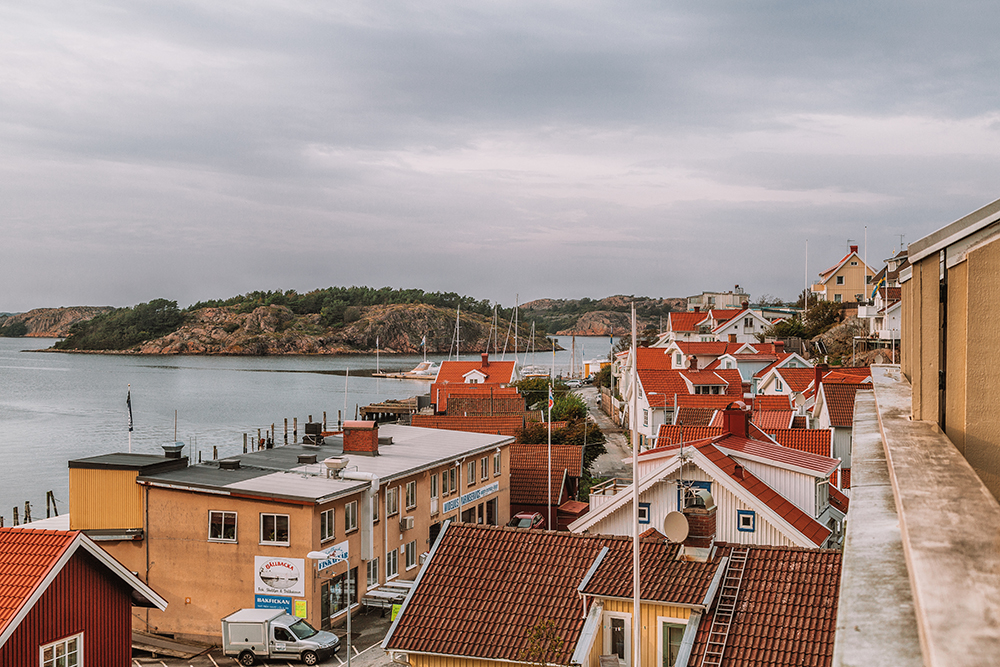
Face-to-face with nature
Eclectic, friendly Gothenburg is a place to visit all year round, but autumn is the season of the rugged coastlines and harsh Nordic landscapes, so next morning we wave good bye to the comfort of the big city, and enter a different Sweden—with steep cliffs, silver lakes and dark brown grass from the constant wind and rain. It feels a bit weird to drive where untouched nature still prevails; these highways, cars and ABBA soundtracks simply don’t belong here.
What does belong for sure are the fishing villages, mostly with less than a thousand locals, neat church, family hotel and even a supermarket (courtesy of the 21st century these slow living communes never really stepped into).
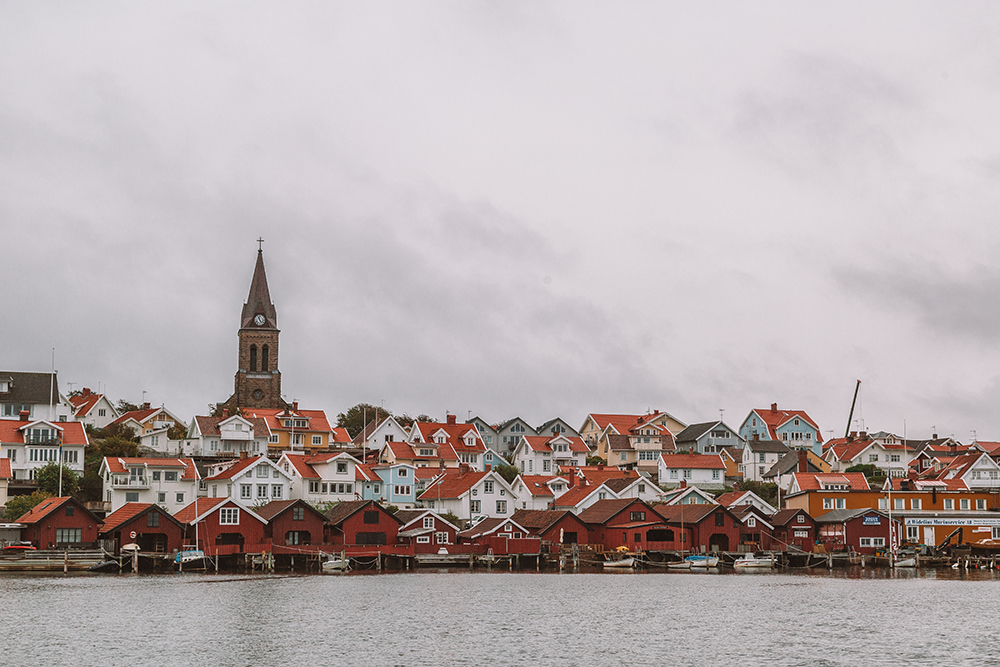
Fjallbacka (pictured above) is one of them. Only the sleepy times are long forgotten here. Multiple Oscars winner Ingrid Bergman brought a summer house in Fjallbacka, attracting crowds of fans and friends, led by Alfred Hitchcock himself, then writing sensation Camilla Lackberg sent in a new stream of visitors, mesmerised by the crime novels set in her home town.
The first person we bounce into while strolling empty Fjallbacka streets is… her mother Gunnel! She wonders where we’re from—Lackberg’s books were translated into 40 languages, so most visitors don’t speak Swedish. After a quick tour around the well-known ‘crime scenes’, Gunnel points towards Kungsklyftan, a plunging gorge in the rock—the place where a little boy found a dead woman in one of the novels. A walk through the gorge makes your skin crawl. Not that it’s really scary, but the views from up there are just incredible; the town is literally hugged by a gargantuan solid rock on one side and a cold Nordic Sea with the Väderöarna archipelago, or ‘The Weather Islands’, on the other.
Having a glimpse into the life of Väderöarna meteorologists sounds like every explorer’s dream come true, so we jump on a boat that takes us to one of the tiny islands. And here we are, battling the gusty wind on the way up the hill to observe the heavy, grouchy clouds swirling over the glistering cliffs, a group of seals from the local colony, and red-painted hotel peeking out from behind the low-hanging mist.
These moody, primeval views are no doubt the biggest upside of travelling to Sweden in autumn. The downside catches up with me shortly – my foot slips off the soggy rock and, rolling down, I have less than a second to decide what to save: expensive camera or my tailbone. Faith is on my side, and we both touch down in one piece.
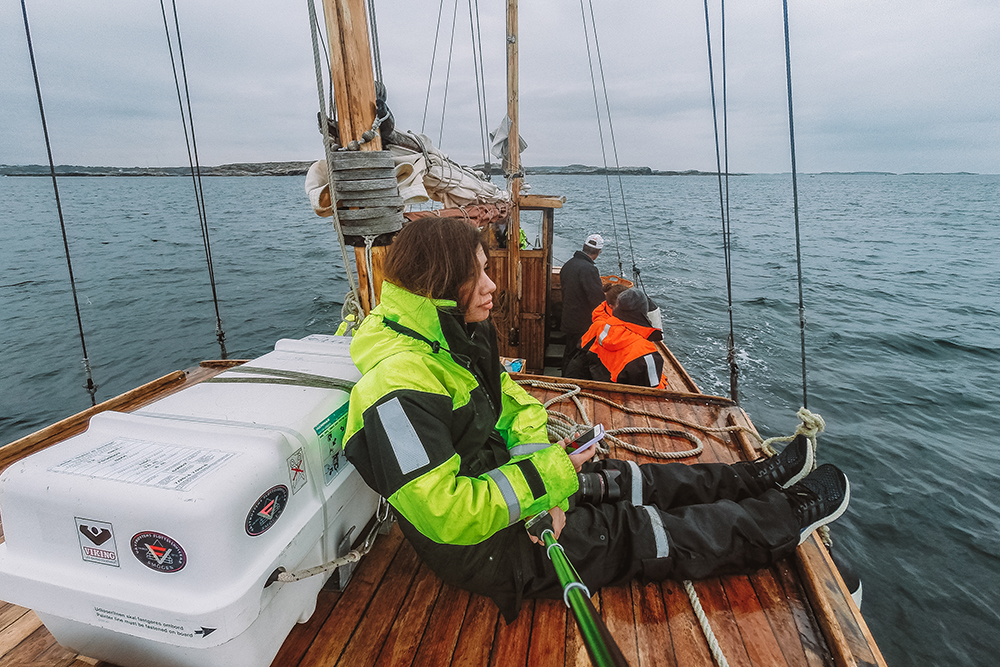
Lobster Season
The must-do experience in Sweden is lobster fishing, and we’re lucky to catch the opening day of the season—it’s always the first Monday after 20 September!
To ensure the lobster population isn’t decreasing, the Swedish Agency for Marine and Water Management has a set of strict rules: no fishing without a permit; no more than 14 lobster pots per fisherman; and female and baby lobsters under eight centimetres should be released. But is it enough to consider fishing for fun appropriate?
Brothers Per and Lars from Grebbelstad (15km away from Fjallbacka) don’t think so. That’s why they’ve turned the popular hobby into a perfect example of conscious tourism. Their company Everts Sjöbod is bringing back the old traditions of thoughtful fishing, and was officially approved by Swedish Ecotourism Society!
The brothers renovated a 19th-century seafront boathouse and are now taking tourists aboard the 1952 wooden retro-boat. They show us how to check lobster pots. We act like kids unwrapping presents—you never know what to expect, but almost every pod brings a lobster or a crab. Following the idea of sustainable tourism, Per and Lars won’t allow us to catch more than what we’ll later be able to eat at their own restaurant.
Words and photos — Kseniia Spodyneiko






